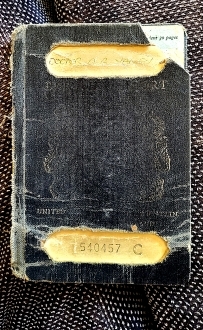Never come to Holland again with this passport
DURING THE 1980s, I used to drive from my home in Kent through Europe to Hungary and Yugoslavia. I used to take the car across the sea on the Olau Line that ran between Sheerness in Kent and Vlissingen in Holland. In those days, I held an old-style UK passport. With hard covers, it was dark blueish black. On the front cover, there was a coat of arms embossed in gold and words in gold lettering mentioning it was a British passport. There were two horizontal slots in the front cover. These were lined with white paper. On one of them, the passport holder’s name was written by hand, and on the other, the passport number.

I used to carry my passport in my trouser pocket. So with time, it gradually got a bit bent as it pressed against my leg. Another thing that happened was that the gold coat of arms and the gold lettering wore so thin that they were barely visible. Likewise, my name on the cover also began to become less distinct.
At various demanding frontiers, such as the borders to Communist countries such as Albania, Bulgaria, and Hungary, the tatty appearance of my passport was of no concern to the often-over-zealous border officials. However, it did cause trouble in a place where I least expected it.
On one occasion, after disembarking at Vlissingen, I handed my passport to the Dutch immigration official. He looked at it, and then wandered away with it. About 10 minutes later, he returned with it, holding it gingerly by one of its corners. As he handed it to me, he said:
“Next time you are coming in Holland, you must have a new passport.”
Clearly my passport’s appearance was not in harmony with the Dutch sense of tidiness and orderliness.



